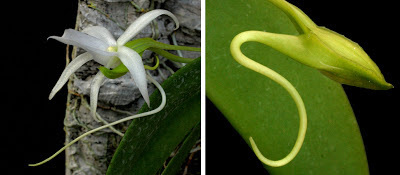In August of 2012, the initial post regarding Angraecum leonis was published in the blog. Since then, I have received numerous emails and questions dealing with the two varieties of Angcm. leonis. The questions center around the distinctive differences between Angcm. leonis from Madagascar and Angcm. leonis from the Comoro Islands. This post will give a visual description of the two varieties along with a review of the culture that I use to grow these phenomenal plants.
As stated in the original post, the Angcm. leonis from Madagascar is the smaller of the two varieties. It grows at the very northern tip of Madagascar at about sea level where the annual rainfall is nothing compared to the amount of rain that the variety from the Comoro Islands receives. The amount of rainfall has a big play into the size of the two varieties.
With less rainfall, the Madagascar version is usually half the size. The leaves are shorter but are very fleshy. The thickness of each leave can be 2 - 2 1/2 times as thick. The leaves hold moisture due to the fact they receive less rain. As I have shown with other Angraecums, when the plants are exposed to more moisture, they have a tendency to become larger plants. When they are not, they adapt to survive.
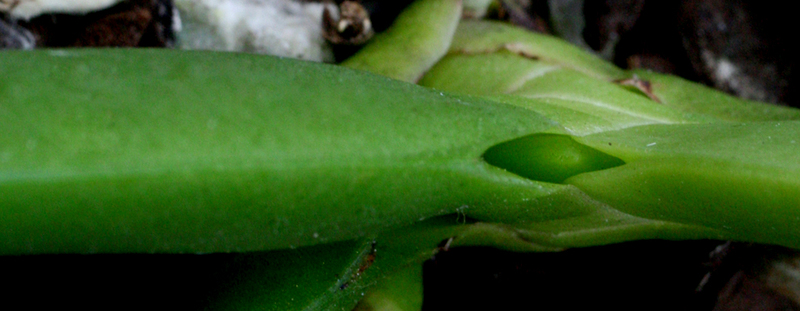
Angcm. leonis (Madagascar version) the thick fleshy leave retains what moisture it can get due to the dry climate.
The leaves of the Madagascar version are about half the size on a mature plant compared to the version from the Comoro Islands.
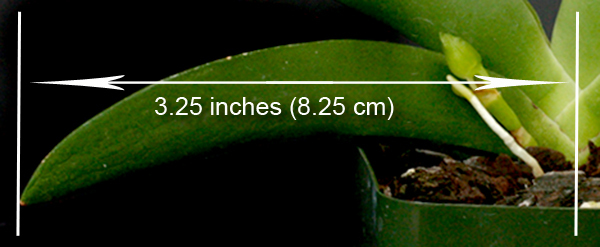
Angcm. leonis (Madagascar version) the longest leaf on this mature plant is less than half the size of a leaf from the Comoro Islands version.
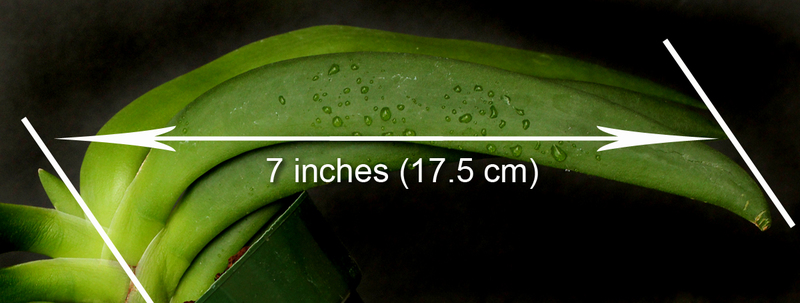
Angcm. leonis (Comoro Islands version) the leaves on each side of the plant are just about the same length. Can reach an overall combined width of 14 plus inches (35 cm) on a well established mature specimen.
Both versions of Angraecum leonis will do well mounted to a cork or a tree fern slab. During the warmest part of the growing season, the plants must be watered daily with an additional misting later in the afternoon. If you see that there are wrinkles forming in the leaves, hydrate the plant several times a day until the wrinkles start to disappear. If the plants have been mounted with any moss around their base, be sure to thoroughly soak the material (it will dry out quickly during the summer heat and with any breeze blowing).
Either version can be potted or placed in baskets with a fast drain medium. The roots of plants that have been placed in pots can develop root rot if not allowed to partially dry. Very often when the leaves start to show wrinkles, it can also spell out the fact that the roots have rotted and the plant is not getting sufficient moisture even if you're watering on a regular basis.
Keep an eye on potted plants! In sub-tropical and tropical climates, it is best to use a non-organic material when potting or placing plants in baskets. This very warm and humid climate will brake down the organic mediums very quickly forcing you to change the medium more frequently. This does not bode well for the root systems.
Flowers of the two versions of Angraecum leonis is also another tell tale sign as to the identity of the plant. The Madagascar version of Angcm. leonis is only about 1 - 1 1/2 inches (3-4cm) wide and about 1 1/2 - 2 inches (4-5cm) high with a nectary/spur about 2 3/4 - 4 inches (7-10cm) long. The Comoro Islands version is about 2 1/4 - 3 inches (6-9cm) wide and about 3 inches (8cm) high with a nectary/spur of about 3 1/2 inches (9cm) long. Both versions are scented and can last up to four weeks if the plants are not exposed to harsh weather while in bloom.
One last visual point of difference between the two Angcm. leonis versions is the shape or the bends of the nectary/spur. The nectary of the Comoro Islands version goes back behind the flower draws down and then comes forward underneath the flower. The Madagascar version will go behind the flower, draw down and as it comes forward reverse again to form the letter 'S'. These are common traits but keep a mental note that not everything is written in stone.
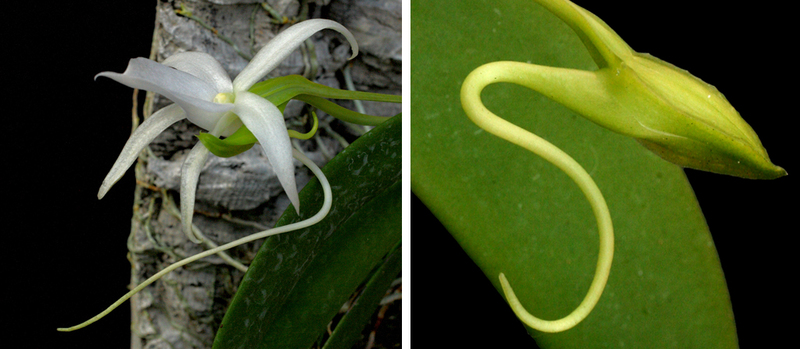
The Comoro version on the left while the Madagascar version is on the right showing the letter 'S' in a developing bud of Angraecum leonis.
No matter what version you are growing, you will be very pleased once the plant starts producing flowers on a yearly basis.
